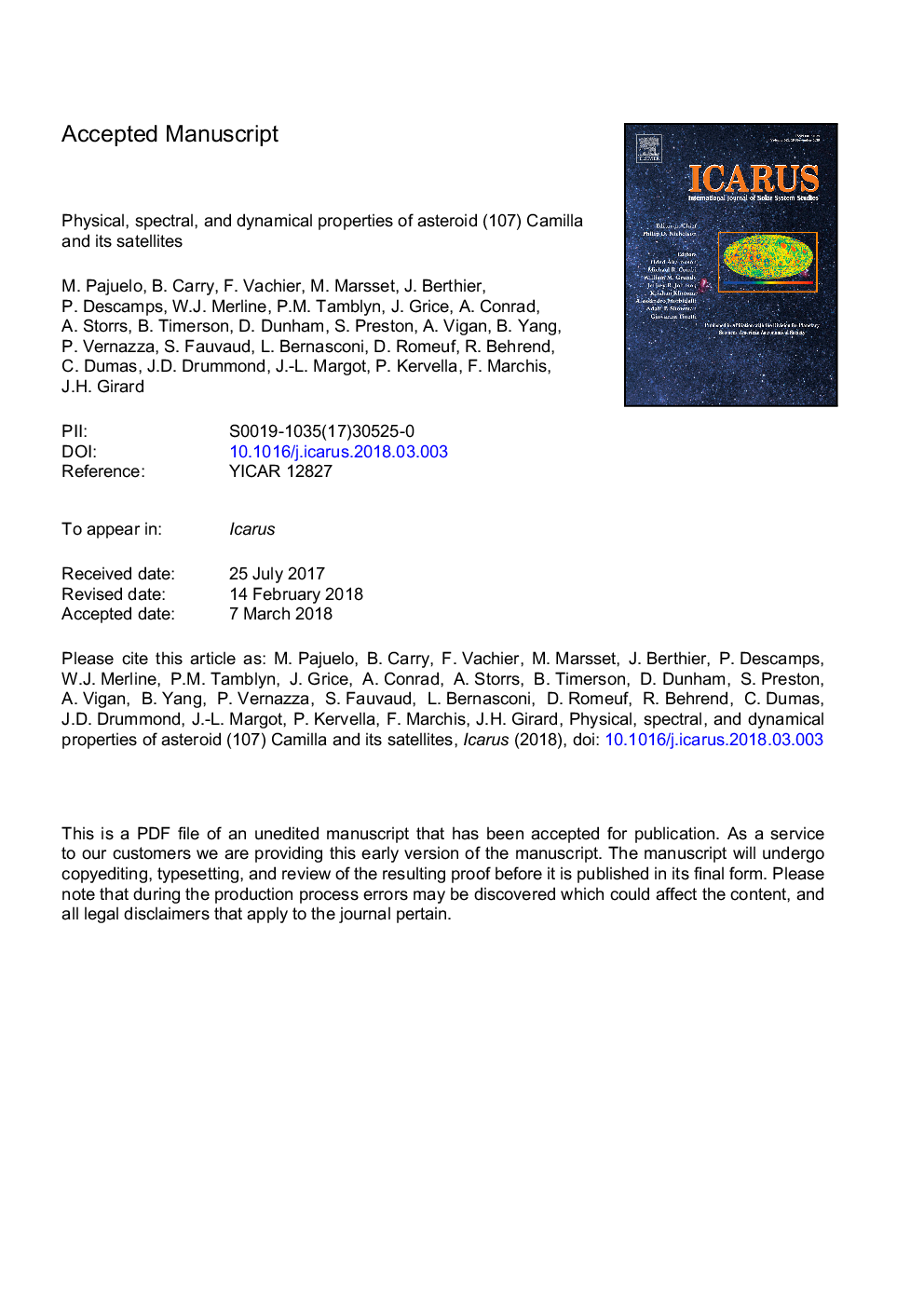| Article ID | Journal | Published Year | Pages | File Type |
|---|---|---|---|---|
| 8134058 | Icarus | 2018 | 42 Pages |
Abstract
We determine the spin and 3-D shape of Camilla. The model fits well each data set: lightcurves, adaptive-optics images, and stellar occultations. We determine Camilla to be larger than reported from modeling of mid-infrared photometry, with a spherical-volume-equivalent diameter of 254 ± 36 km (3Ïuncertainty), in agreement with recent results from shape modeling (Hanus et al., 2017, A&A 601). Combining the mass of (1.12 ± 0.01) Ã 1019 kg (3Ïuncertainty) determined from the dynamics of the satellites and the volume from the 3-D shape model, we determine a density of 1,280 ± 130 kg · mâ3 (3 Ï uncertainty). From this density, and considering Camilla's spectral similarities with (24) Themis and (65) Cybele (for which water ice coating on surface grains was reported), we infer a silicate-to-ice mass ratio of 1-6, with a 10-30% macroporosity.
Related Topics
Physical Sciences and Engineering
Earth and Planetary Sciences
Space and Planetary Science
Authors
M. Pajuelo, B. Carry, F. Vachier, M. Marsset, J. Berthier, P. Descamps, W.J. Merline, P.M. Tamblyn, J. Grice, A. Conrad, A. Storrs, B. Timerson, D. Dunham, S. Preston, A. Vigan, B. Yang, P. Vernazza, S. Fauvaud, J.H. Girard,
